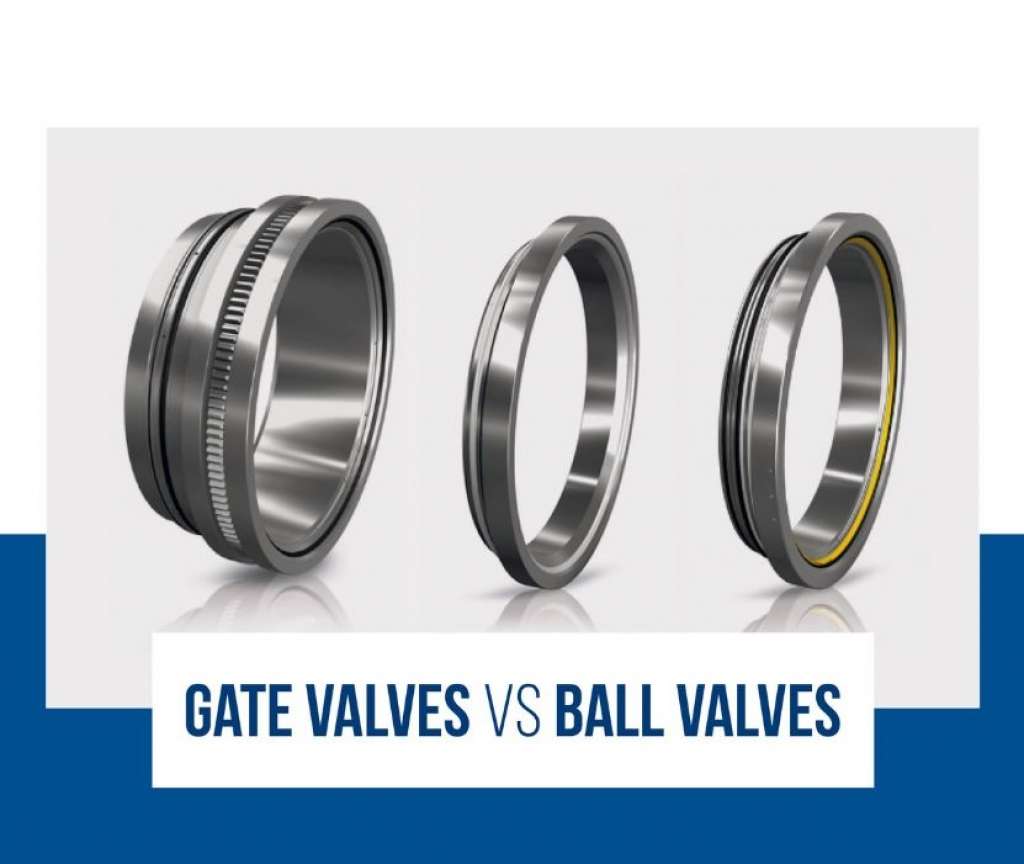
Gate valves and ball valves are widely employed across various industries and domestic applications. Both are available in diverse temperature and pressure ratings, making them adaptable to numerous fluid handling scenarios. Despite serving the overarching purpose of controlling fluid flow, their distinct designs dictate their suitability for specific environments.
The selection between a gate valve and a ball valve hinges primarily on the intended use. Gate valvesare best suited for applications demanding full, unobstructed flow or complete shut-off. They are designed for "on/off" service, meaning they are either fully open or fully closed. This characteristic makes them ideal for isolating sections of pipeline networks where minimal pressure drop is paramount when the valve is open. Examples include water supply systems, oil and gas pipelines for isolation, and steam systems in power plants.
Conversely, ball valves excel in applications requiring quick shut-off, reliable sealing, and in some cases, moderate throttling. Their quarter-turn operation allows for rapid response, making them suitable for emergency shut-offs. Ball valves find extensive use in HVAC systems, chemical processing, and food and beverage industries, particularly where swift control and excellent sealing are critical. They are also favored in applications handling gases, where a long-term, tight seal is indispensable.
Operational Mechanism
The fundamental difference between gate and ball valves lies in their internal mechanism for controlling flow.
Gate Valves: A gate valve utilizes a barrier, often a flat or wedge-shaped disc, that moves perpendicularly to the fluid flow path. When the valve is fully open, this "gate" is lifted entirely out of the fluid path, minimizing resistance and pressure drop. To close the valve, the gate is lowered, seating firmly against the valve seats to create a complete seal and block the fluid flow. The movement of the gate typically requires multiple turns of the shaft by the actuator to fully open or close the valve.
Ball Valves: A ball valve employs a spherical ball with a bore (hole) drilled through its center. This ball is housed within the valve body and positioned between two seats. A stem is connected to the ball, allowing it to rotate. When the valve is in the open position, the bore of the ball aligns with the flow path, permitting fluid to pass through. To shut off the flow, the ball is rotated 90 degrees, positioning the bore perpendicular to the flow path and effectively blocking it. This quarter-turn mechanismenables rapid opening and closing.
Advantages and Disadvantages
Each valve type presents a unique set of advantages and disadvantages that influence its application suitability.
Gate Valve Advantages:
- Low Pressure Drop: When fully open, gate valves offer minimal resistance to fluid flow.
- Good Sealing Capability: When fully closed, gate valves provide a tight and reliable seal.
- Bi-directional Flow: Many gate valve designs allow for bi-directional flow.
- Wide Range of Sizes: Gate valves are available in a broad spectrum of sizes.
Gate Valve Disadvantages:
- Not Suitable for Throttling: Partial opening can lead to accelerated wear and erosion.
- Slow Operation: The multi-turn mechanism makes them slow to operate.
- Larger Installation Space: Rising stem gate valves require significant vertical space.
- Potential for Wear: The gate and seats can experience wear over time.
Ball Valve Advantages:
- Quick Operation: The 90-degree quarter-turn operation allows for rapid opening and closing.
- Excellent Sealing: Ball valves offer a very tight and reliable shut-off.
- Compact Design: Their design typically requires less installation space.
- Low Maintenance: Ball valves generally require minimal maintenance.
- Durability and Long Life: Ball valves are known for their long service life.
Ball Valve Disadvantages:
- Not Ideal for Heavy Slurries: Standard ball valves may not be suitable for thick slurries.
- Temperature Limitations: Seating materials can be susceptible to degradation at very high temperatures.
- Water Hammer Risk: Rapid closing can increase the risk of water hammer.
- Erosion in Throttling Applications: Continuous partial opening can lead to increased wear.
The choice between gate valves and ball valves is a critical engineering decision that significantly impacts the efficiency, safety, and longevity of a fluid handling system.
A thorough understanding of these differences allows for informed valve selection. While understanding the primary products is certainly critical, it is equally important to evaluate all the products that contribute to achieving the smoothest result, such as seats. Furthermore, partnering with providers who can offer the experience, competence, and skill to design an optimized system with the highest performance and reduced operational costs is crucial.
A thorough understanding of these differences allows for informed valve selection. While understanding the primary products is certainly critical, it is equally important to evaluate all the products that contribute to achieving the smoothest result, such as seats. Furthermore, partnering with providers who can offer the experience, competence, and skill to design an optimized system with the highest performance and reduced operational costs is crucial.